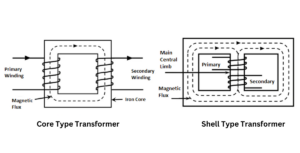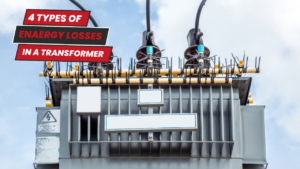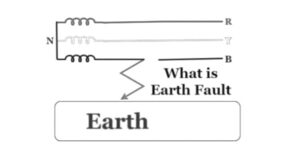A conservator tank is a cylindrical tank mounted on top of the main tank of a transformer. It is an airtight metal drum connected to the main tank by a pipe. Its purpose is to accommodate the expansion and contraction of the transformer oil without allowing it to contact the outside air. This helps maintain a constant oil level and prevents moisture and contaminants from entering the transformer.
In-depth detail of the conservator tank
The conservator tank of a transformer is a crucial component that plays a vital role in ensuring the safe and efficient operation of the transformer. Let’s delve into the in-depth details of the conservator tank and explore its various features and functionalities below:-
- The conservator tank is specifically designed to hold the transformer oil, also known as transformer oil or insulating oil.
- The main function of the tank is to accommodate the expansion and contraction of the transformer oil due to temperature variations.
- When the temperature of the transformer increases, the oil expands, and the excess oil flows into the conservator tank, thereby maintaining a constant oil level.
- Conversely, when the temperature decreases, the oil contracts and the tank supplies the contracted oil back into the leading tank, ensuring a stable oil level.
- The tank acts as a buffer for the oil volume changes, preventing overfilling or underfilling of the main tank.
- By isolating the oil from the external environment, the conservator tank protects the oil from moistness, contaminants, and oxygen, which can degrade its electrical properties.
- Many conservator tanks incorporate a breather device, such as a silica gel, to absorb moisture and filter out impurities in the air.
- The transformer conservator is connected to the main tank through a pipe, allowing the oil to flow freely between the two.
- Inside the tank, there is usually an air cell or a diaphragm that separates the oil from the air, further preventing contact between the oil and the external environment.
- The diaphragm flexes with the changing volume of oil, maintaining a constant pressure within the conservator tank.
- The conservator tank plays a vital role in ensuring the proper functioning and longevity of the power transformer by regulating the magnitude of oil and protecting it from external factors that could degrade its performance.
Learn more about Grant Transformer‘s conservator tank design and discover how our conservator tanks are constructed to ensure optimal performance and protection. Contact Us for detailed information.
Construction of the Conservator tank
The construction of the conservator tank takes into account several factors to ensure its functionality and reliability. The tank is designed to accommodate the volume changes of the transformer oil and maintain a consistent oil level. Here are some key aspects of the conservator tank’s construction:
- Size and Shape: The size and shape of the conservator tank are determined based on the magnitude of the transformer and the oil it contains. It is typically cylindrical in shape, providing sufficient space for oil expansion and contraction.
- Material: The conservator tank is constructed using a suitable material, such as steel or other metals, to withstand the mechanical and environmental stresses it may encounter. The material provides strength and durability to the tank.
- Airtight Construction: The conservator tank is designed to be airtight, preventing the entry of external air into the tank. This is crucial to maintain the oil’s dielectric properties and prevent contamination.
- Breather Device: The conservator tank often incorporates a breather device, such as a silica gel or an oil breather, to control the moisture and gas levels inside the tank. It helps maintain a dry and clean internal environment.
- Level Indicator: A level indicator is installed inside the conservator tank to monitor and indicate the oil level. It allows operators to easily assess the oil volume without the need to open the tank.
- Oil Connection: The conservator tank is connected to the main transformer tank through a pipe or conduit. This allows the oil to flow freely between the two compartments, enabling them as temperature changes.
Our team of experts are available to discuss your requirements and provide guidance on the best conservator tank solution for your transformer. Schedule a consultation with us today.
Functions and Workings of the Conservator Tank of a Transformer
The conservator tank of transformer functions to regulate the oil level inside, ensuring optimal operation during varying loads. The tank is connected to the main transformer tank and acts as a reservoir for the transformer oil. When the load on the transformer increases, the oil inside expands, and the excess oil flows into the conservator tank, maintaining a consistent oil level.
Contrarily, when the load decreases, the oil contracts and the conservator tank supplies the contracted oil back into the main tank, ensuring the oil level remains stable. This mechanism allows the tank to accommodate oil volume changes and prevent overfilling or underfilling, ensuring the transformer operates efficiently and effectively.
Flexible separator/ air cell in a conservator tank
A flexible separator, also known as an air cell, is incorporated within the conservator tank of power transformers with large capacities (above 5 MVA) to prevent direct contact between air and transformer oil. This air cell serves as a permanent, flexible, and non-porous barrier that safeguards the transformer oil from atmospheric exposure without compromising the operational performance of the system.
The separator is constructed using a high-resistance fabric that is externally coated to resist transformer oil and internally coated to resist ozone and weather conditions. Some advantages of using this flexible separator are as follows:
- Prevention of air-oil contact.
- Protection against water vapour and gases.
- Suppression of gas bubble formation in the oil.
- Accommodation of significant volume changes within the system.
The types of Conservator Tank
There are two main types of conservator tanks commonly used in transformers:
- Traditional Oil-Filled Conservator Tank: This type of conservator tank is filled with transformer oil and is connected to the main transformer tank. It operates based on the principle of oil expansion and contraction. As the temperature of the transformer changes, the oil expands, and the excess oil flows into the conservator tank, maintaining a constant oil level. When the temperature decreases, the oil contracts and the conservator tank supplies the contracted oil back into the main tank.
- Dry-Type Conservator Tank: In certain transformers, instead of using oil, a dry-type conservator tank is used. This type of conservator tank does not contain oil but is filled with air or an inert gas, such as nitrogen. The dry-type conservator tank is sealed and designed to withstand the pressure variations caused by changes in temperature. It functions by allowing the air or gas inside to expand and contract with temperature fluctuations, thereby accommodating the changes in volume without the need for oil.
At Grant Transformers, we prioritise customer satisfaction. Benefit from our dedicated support team, available to provide technical assistance, maintenance services, and prompt response to your inquiries.
Have unique requirements for your transformer needs? Our team of experts can design and manufacture customised solutions tailored to your specifications. Get in touch to discuss your personalised project.



